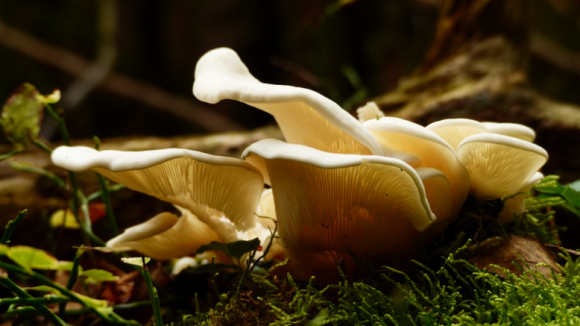When many people think of fungi, they simply think mushroom. However, Kingdom Fungi is a vast and diverse group of eukaryotic organisms found worldwide. Fungi include yeasts, molds, and mushrooms. They grow everywhere—from Antarctica to Mount Everest! But why are we featuring fungi in a blog post? That’s because fungi are increasingly becoming interesting as a source of novel compounds that could be explored for drug development.
Penicillin, one of the world’s most powerful weapons in the fight against disease, was discovered in a common bread mold. Its discovery led to the development of a host of other antibiotics, including ampicillin and amoxycillin. The importance of the discovery of penicillin cannot be overstated. In fact, American novelist Katherine Dunn once wrote, “Prior to penicillin and medical research, death was an everyday occurrence. It was intimate.”
Since the discovery of penicillin, research on fungi has led to the development of a host of other drugs. These drugs include a variety of new antibiotics, immunosuppressants (e.g., cyclosporin A), and cholesterol-lowering medications (e.g., lovastatin). Drugs derived from fungi are even used for chemotherapy. However, nearly 95% of the world’s fungi have not yet been investigated!
Now a host of biomedical research is concentrating on fungi, exploring the enormous variety of these organisms in an effort to discover new compounds with life-saving potential. Dutch researchers at the Hubrecht Institute, in collaboration with others from the Westerdijk Institute and Utrecht University, have created a library of products derived from over 10,000 fungi. These researchers are investigating the effects of these fungi-produced products on zebrafish embryos. Zebrafish are often used in drug testing because they are physiologically similar to humans and develop from embryo to maturity in a very short time span. So far, researchers have only investigated a small number of these biologically active compounds; however, research on fungi (mycology) has the potential to lead to the development of exciting new therapeutics that may change the way we live.
Interested in contributing to this research? There are several projects that engage citizen scientists in exploring the fungal kingdom:
- United States and Canada: Fungal Diversity Survey
- UK (but can participate worldwide): Swab and Send
- UK (project has ended but still accepts new reports): The Lost and Found Fungi Project
- Europe: Mycology Citizen Science App Pilzfinder
- Canada: Canadian Sclerotinia Initiative
You could also learn more about citizen science and fungi from this podcast from Mushroom Hour and visit some interesting Instagram accounts that explore fungi:
- POC Fungi Community
- North American Mycological Association
- Christian Schwartz, biodiversiphile
To learn more about the fungal kingdom and the amazing diversity of fungi, check out these resources on LabXchange:
ABE Connection
The ABE Foundations of Biotech labs use ampicillin, a semisynthetic derivative of penicillin, which was isolated from fungi. In these labs, ampicillin is used to select for bacteria containing the gene that codes for rfp. The transformed bacteria also contain a gene that imbues them with resistance to ampicillin. Any bacteria without this resistance will die off when plated on agar that contains ampicillin, leaving only the bacteria containing the gene of interest. This is critical because it allows scientists to identify bacteria that have been transformed quickly and easily.
